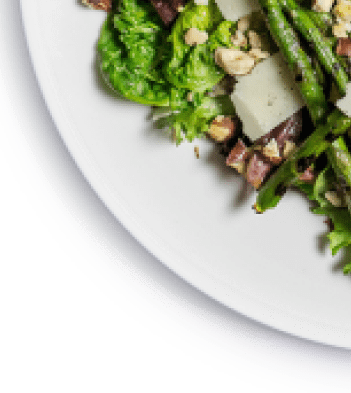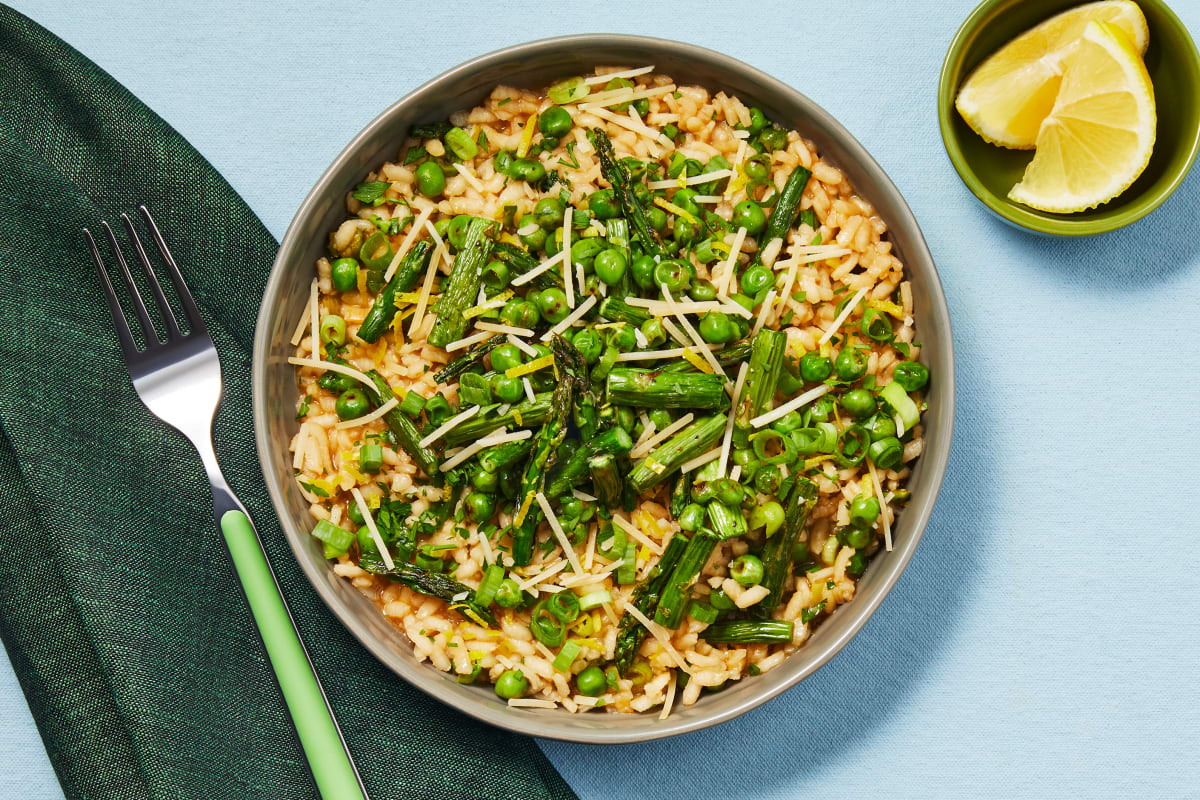
Salmon & Lemony Charred Pea Risotto
with Asparagus & Parmesan
Risotto’s comforting luxuriousness never fails to satisfy. With a reputation for being labor intensive—ours couldn’t be easier! This version begins with rich veggie stock, and the addition of tender, charred peas and roasted asparagus takes the dish to the next level. It’s finished with lemon zest, parsley, and a generous sprinkle of Parmesan and served with lemon and scallion greens to contrast to the risotto’s creamy richness.
The quantities provided above are averages only.
Produced in a facility that processes eggs, milk, fish, peanuts, sesame, shellfish, soy, tree nuts, and wheat.
Ingredients
6 ounce
Asparagus
¾ cup
Arborio Rice
4 ounce
Peas
1 unit
Lemon
2 unit
Scallions
2 clove
Garlic
2 unit
Veggie Stock Concentrate
3 tablespoon
Parmesan Cheese
(Contains Milk)
¼ ounce
Parsley
10 ounce
Salmon
(Contains Fish)
Not included in your delivery
3 teaspoon
Cooking Oil
2 teaspoon
Olive Oil
2 tablespoon
Butter
(Contains Milk)
Salt
Pepper
Nutrition Values
Utensils
Instructions
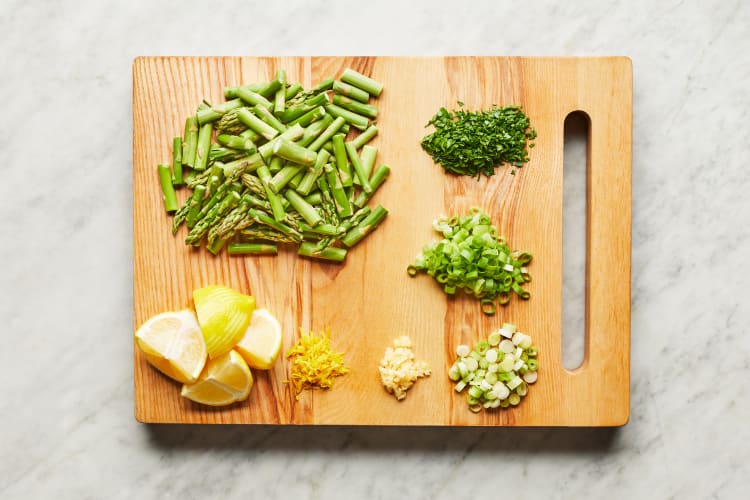
• Adjust rack to top position and preheat oven to 425 degrees. • In a medium pot, combine 5 cups water (use a large pot and 8 cups water for 4 servings) and a pinch of salt. Bring to a boil, then reduce heat to low. • Wash and dry produce. • Trim and thinly slice scallions, separating whites from greens. Peel and mince or grate garlic. Trim and discard woody bottom ends from asparagus; cut crosswise into 1-inch pieces. Zest and quarter lemon. Finely chop parsley.
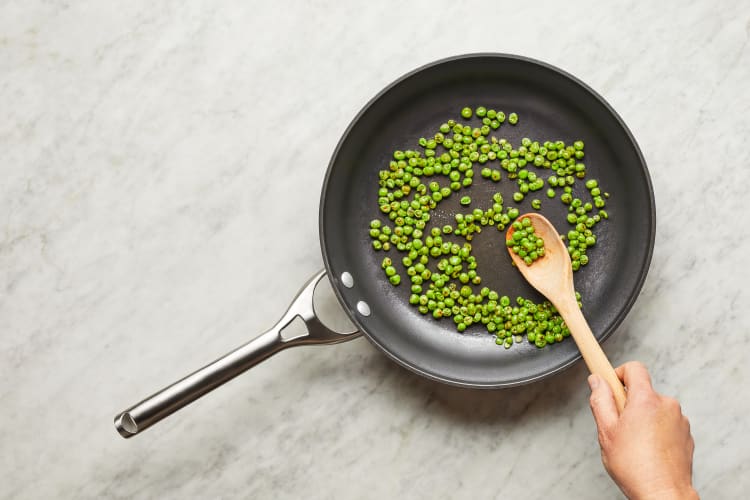
• Heat a drizzle of oil in a large pan over high heat. Add peas and cook, stirring constantly, until lightly charred and tender, 2-4 minutes. Remove from heat; transfer peas to a small bowl. Wipe out pan.
Pat chicken or salmon dry with paper towels; season with salt and pepper. Heat a drizzle of oil in pan used for peas over medium-high heat. Add chicken or salmon (skin sides down); cook chicken until cooked through, 3-5 minutes per side; or cook salmon until skin is crisp, 5-7 minutes, then flip and cook until cooked through, 1-2 minutes more. Turn off heat; transfer to a cutting board to rest. Wipe out pan.
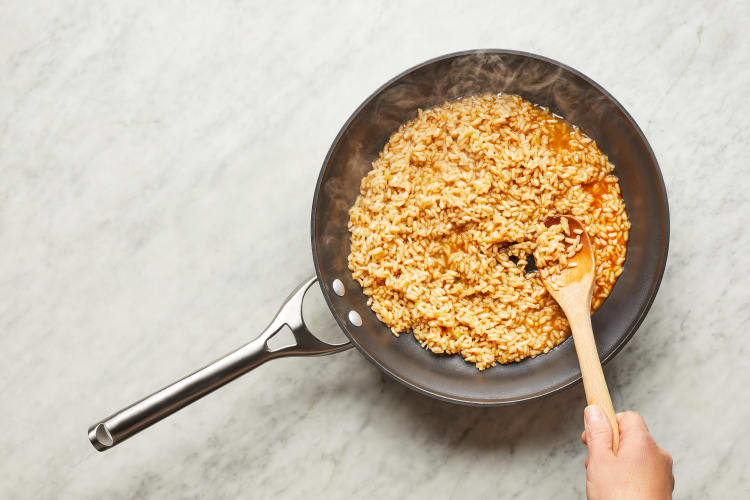
• Heat a large drizzle of olive oil in same pan over medium heat. Add scallion whites, garlic, and rice. Cook, stirring, until scallion whites and garlic are fragrant and rice is translucent, 1-2 minutes. • Add 1 cup warm water and stock concentrates; stir until liquid has mostly absorbed. Repeat with remaining warm water—adding ½ cup at a time and stirring until liquid has absorbed—until rice is al dente and risotto is creamy, 18-20 minutes. TIP: Depending on the size of your pan, you may need a little more or a little less liquid; try adding pinches of salt throughout the cooking process to make sure the risotto is well-seasoned at the end.
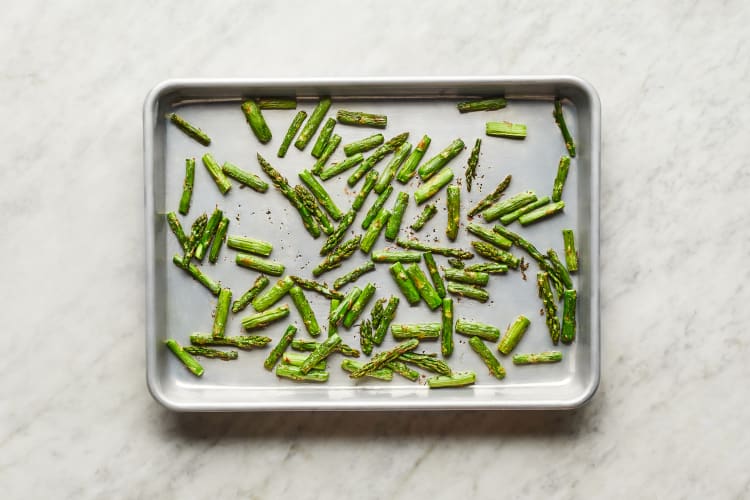
• Once risotto has cooked 10 minutes, toss asparagus on a baking sheet with a drizzle of oil, salt, and pepper. • Roast asparagus on top rack until tender and lightly browned, 8-10 minutes.
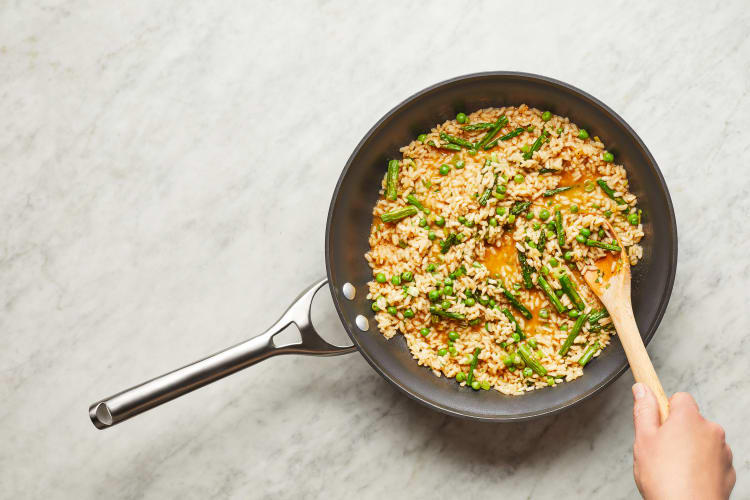
• Once risotto is al dente, reduce heat to low. Stir in half the peas, half the asparagus, half the lemon zest, juice from half the lemon, and ¼ cup plain water (1⁄3 cup for 4 servings) until combined. • Stir in half the scallion greens, half the parsley, half the Parmesan, and 2 TBSP butter (4 TBSP for 4) until combined and butter is melted. Season generously with salt and pepper. TIP: The risotto should be a little loose and saucy right before serving; it will thicken as it cools, so add more water if necessary.
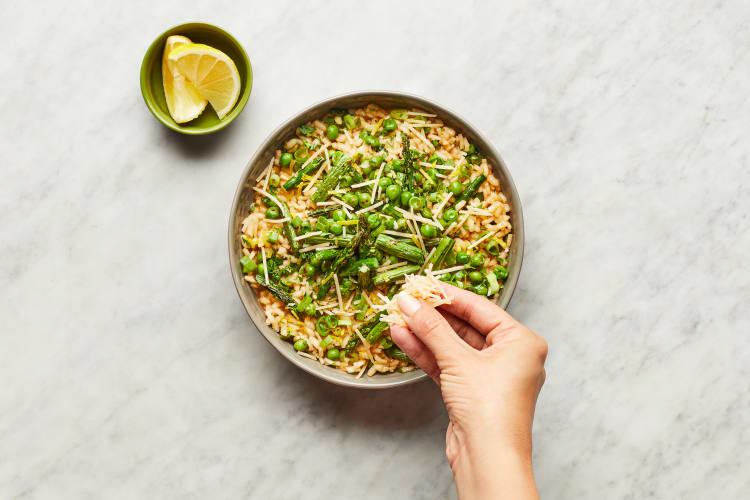
• Divide risotto between bowls. Top with remaining peas, asparagus, lemon zest, scallion greens, parsley, and Parmesan. Serve with remaining lemon wedges on the side.
Thinly slice chicken against the grain. Place chicken or salmon atop risotto.
Salmon is fully cooked when internal temperature reaches 145°.




